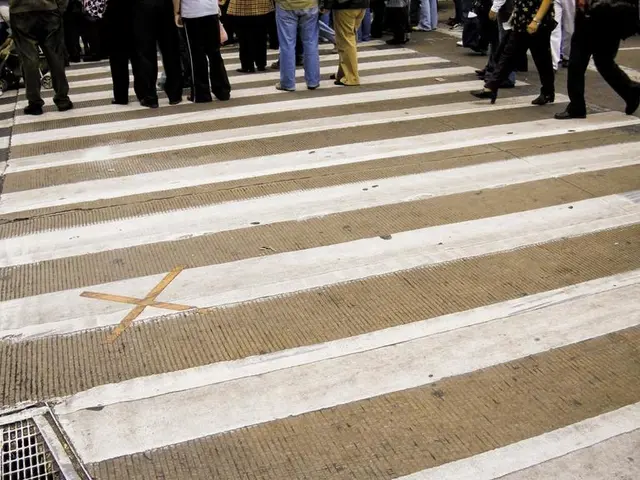Roof Extensions Comparison: Flat versus Pitched - Which is More Suitable for Your Home and You?
Compared to pitched roofs, flat roof extensions present a balancing act in terms of design, cost, and practicalities. Here's a breakdown to help make your best decision.
When comparing flat and pitched roofs for your extension project, several factors come into play to ensure a harmonious and budget-friendly choice.
Aesthetics and Architectural Compatibility
- Pitched roofs offer traditional charm and can blend harmoniously with existing homes featuring the same roof style.
- Flat roofs offer a modern, sleek appearance, often preferred in contemporary designs, but they may not match certain traditional architecture styles.
Climate and Weather Resistance
- Pitched roofs efficiently shed water, snow, and debris in wet climates, making them suitable for regions with heavy precipitation.
- Flat roofs require a slight pitch (about ¼-inch per foot) for adequate drainage, yet they're prone to water pooling and leaks in wetter regions.
Structural Feasibility and Load
- Pitched roof conversions may necessitate a structural survey to assess whether the extension or existing structure can accommodate the additional weight and new framework.
- Flat roofs are generally lighter and easier to install onto existing structures, but their load capacity should still be carefully considered, especially when serving as a rooftop terrace or garden.
Drainage and Maintenance
- Pitched roofs facilitate natural water runoff, decreasing the risk of leaks and ponding.
- Flat roofs need careful design and top-notch waterproofing materials to prevent water intrusion and must be regularly inspected and maintained.
Cost and Installation
- Pitched roofs tend to require more materials and labor initially, increasing immediate costs, but they may offer longevity and lower maintenance costs in harsh climates.
- Flat roofs typically have lower upfront costs and construction time, but they may require additional maintenance expenses over time.
Additional Space and Usage
- Flat roofs can provide extra living space, such as rooftop gardens or terraces, which pitched roofs cannot offer.
- Pitched roofs potentially offer attic or loft space for additional storage or living areas.
Ultimately, when deciding between a pitched and flat roof, consider the unique characteristics and advantages of each style, keeping in mind budget limitations, local climate, and architectural integration.
Both pitched and flat roofs have their pros and cons, and the ideal choice depends on numerous factors, including budget, maintenance, house design, location, and durability.
"Choosing the appropriate roof for an extension involves careful consideration of the existing house architecture and the surrounding area," explains Maura Trumble of CCY Architects. "Harmony between the extension and the original design is crucial."
By carefully weighing your options, you can find the perfect blend of aesthetics, functionality, and budget friendliness for your home extension project.
FAQs
What is the best type of roof for an extension?
"Any additions or extensions to an existing house should have a strong relationship to the original design and form," comments Maura Trumble, principal at CCY Architects. "Consider the spaces you're trying to create, function, purpose, and intended atmosphere before deciding on a roof form."
- Interior design considerations might involve harmonizing the new roof with the existing home's decor to create a cohesive overall look.
- Art can be incorporated into roof structures, such as tiles or murals on flat roofs, to reflect and complement the home's lifestyle and personal preferences.
- Outdoor living spaces can extend to the rooftop with a flat roof extension, offering an opportunity to enjoy home-and-garden elements in a fresh and unconventional manner.
- Home-improvement projects, like installing or updating roofs, can boost a home's value, providing tangible benefits for years to come.








